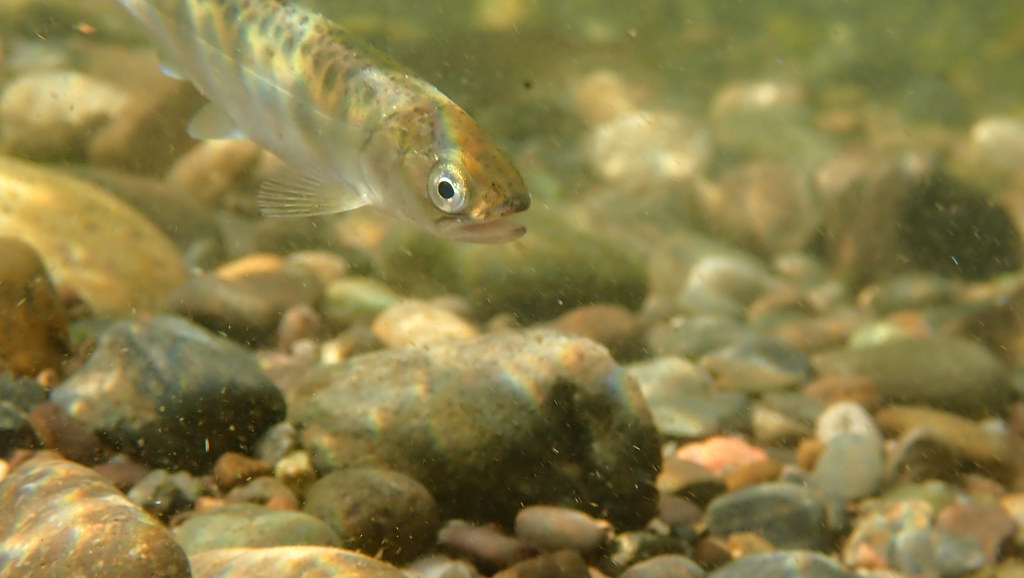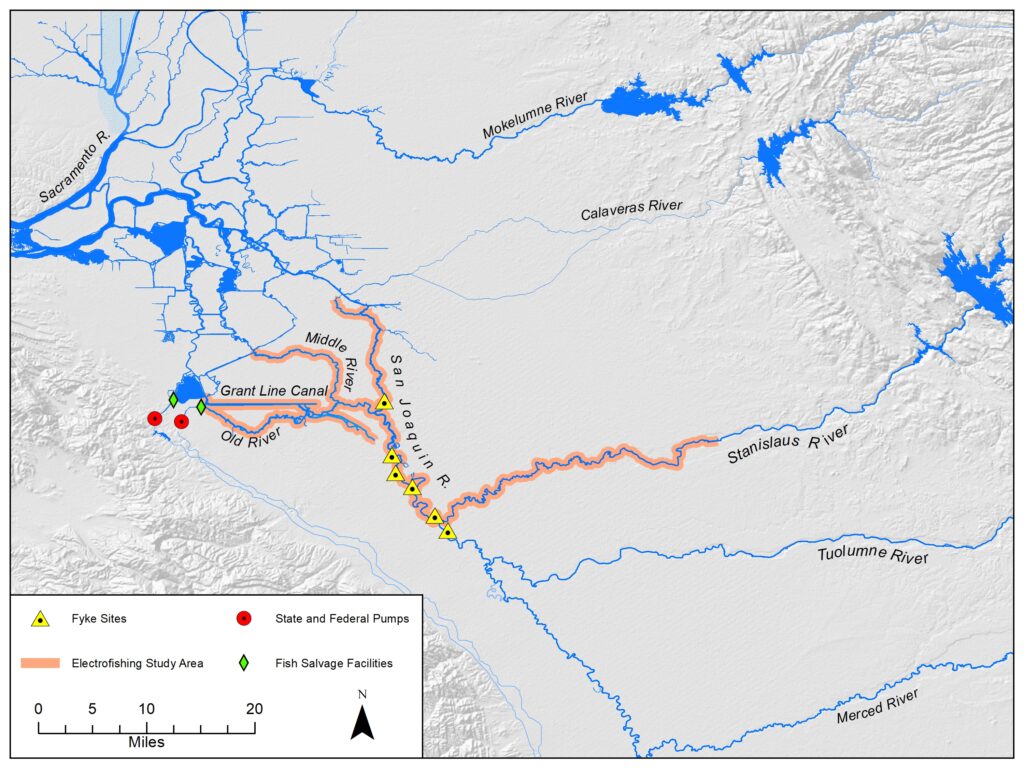Monday October 3, 2022

A recent science symposium hosted by the State Water Contractors, a non-profit association of 27 public agencies in California, brought people together from across the scientific community to examine the science behind spring flows and water export limits in the south Sacramento-San Joaquin Delta. The symposium, titled Spring-Season San Joaquin River Flows and South Delta Exports, sought to understand why most Central Valley salmon populations continue to decline despite more than 30 years of water management actions intended to protect the species. Presentations and discussions focused on the history of flow and water export regulations intended to improve juvenile salmon survival, how water moves through the south and central Delta, and what has been learned over the last decade about salmonid behavior and survival relative to these factors from acoustic telemetry studies.
To protect juvenile salmon in the Delta, regulators closely manage San Joaquin River flows and water exports in the spring to reduce reverse flows (when water flows towards the pumps rather than toward the ocean) that are created when the State Water Project and Central Valley Water Project pump water out of the southern Delta. Reverse flows can lead to higher salmon mortality rates, as fish can become directly entrained at the pumps or pulled into the interior Delta where survival rates are low. Higher San Joaquin River flows are thought to be associated with higher water velocities in the Delta which can improve salmon survival by reducing travel times and keeping fish out of the interior Delta (where survival is lower) and in the main migratory channels (e.g. mainstem San Joaquin River). However, many of the talks at the symposium indicated that managing inflows and exports has little to no influence on water velocities and salmon survival in the interior Delta. In the majority of the Delta, flows naturally switch direction with the ocean tides, and data was presented at the symposium to show that tides tend to have a stronger effect on water velocities and salmon routing in the interior Delta. Presentations also suggested that water exports and associated entrainment at the pumps are not a primary source of salmonid mortality in the Delta. In fact, acoustic study data suggests that fish that are salvaged through the export facilities and trucked past the Delta into the Bay are more likely to survive than fish that swim through the Delta.

A panel of experts fielded audience questions and discussed the multitude of factors, besides inflows and exports, that may be responsible for low survival of salmonids in the Delta. One factor that the panel thought may be contributing to low survival is the heavily altered fish community in the Delta, which is now home to many non-native fish including striped bass (Morone saxatilis) and black bass (Micropterus spp.). Diet studies throughout the Central Valley show that these species consume juvenile Chinook salmon, but the effects have seldom been quantified as noted by the panel. Furthermore, data are lacking to describe how the abundance of non-native predators and their consumption of native fishes like salmon may be influenced by management actions.

Two studies being conducted by FISHBIO are concurrently collecting data to quantify the impacts of predation on San Joaquin Basin juvenile salmon survival in the San Joaquin River, the south Delta, and the Stanislaus River – a stream that contributes to management of flows and exports through releases from the Central Valley Project’s New Melones Reservoir. Each of these studies are using mark-recapture techniques to learn about non-native predator abundance, survival, and movement, as well as what they are eating along the 130-kilometer migratory corridor from the Stanislaus River to the south Delta. Analyses are under way exploring the rate at which striped bass and black bass are consuming juvenile Chinook salmon during their migration downstream, and the environmental factors that may be contributing to the impacts these non-native predators have on the juvenile salmon population. Future Fish Reports will cover updates and new results from this work. FISHBIO expects these findings to contribute to the broader understanding of the mechanisms controlling salmon survival in the San Joaquin Basin, and to inform effective management strategies that offer the greatest benefits to migrating juvenile salmonids in the region.
This post featured in our weekly e-newsletter, the Fish Report. You can subscribe to the Fish Report here.
